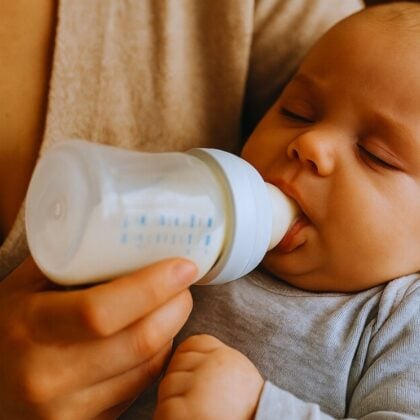
Does your child complain of tummy aches after drinking a glass of milk or eating an ice cream? Does he suffer from bloating, gas or diarrhoea after certain meals? It could be a case of lactose intoleranceThis is a common digestive disorder, but one that is still little recognised in children.
Don't panic: there are simple signs to spotaccessible tests, and above all practical solutions for adapting your diet without frustration.
Lactose intolerance: what exactly is it?
Lactose is the main sugar in milk. To digest it, the body produces an enzyme called lactaseproduced in the small intestine.
When this enzyme is produced in insufficient quantities, the lactose is not properly absorbed. It then ferments in the colon, causing discomfort, gas, diarrhoea, pain... This is known as lactose intolerancedifferent frommilk allergywhich involves a reaction from the immune system.
How can it be identified in children?
The signs vary from child to child. They generally appear between 15 minutes and 2 hours after ingestion of lactose.
Most frequent digestive disorders:
-
Bloating, swollen belly
-
Flatulence or foul-smelling gas
-
Abdominal pain
-
Diarrhoea (sometimes acid)
-
Nausea or regurgitation
-
Loose or explosive stools
Other possible signs :
-
Fatigue or irritability after meals
-
Sleep disorders
-
Loss of appetite
⚠️ These signs are non-specificThat's why it's important to consult a professional to confirm a link with lactose.
How do you confirm lactose intolerance in a child?
Here are the steps you can take to confirm a lactose intolerance in children :
1. Parental observation
Start by noting any digestive problems: when do they appear? After which foods? Keep a food diary for a few days.
2. Temporary avoidance of lactose
Under medical supervision, you can test a lactose-free diet for 7 to 14 days to observe an improvement. Then gradually add lactose again to check the reaction.
If the child develops digestive problems again after returning to foods containing lactoseIntolerance is therefore highly likely.
3. Medical tests
-
Breathing test with hydrogen (breath)
-
Genetic testing (rarely prescribed)
-
Stool analysis (in infants)
🧑⚕️ If in doubt, consult a paediatrician or gastroenterologist.
At what age can you become lactose intolerant?
-
At the infanta congenital intolerance (alactasia) is extremely rare.
-
The most common form appears from 3-5 yearsThere is a gradual drop in lactase (the enzyme that digests lactose).
-
It can also be temporaryafter gastroenteritis or an episode of acute diarrhoea.
Should all dairy products be eliminated?
Not necessarily! Some children can tolerate small amounts of lactose (yoghurts, hard cheeses, lactose-free milk, etc.). The aim is to :
-
Identifying the tolerance threshold of the child
-
Adapting your diet without creating deficiencies
-
Avoid unnecessary exclusion of dairy products
👉 Dairy products are a source of calcium, vitamin D and protein: it is important to maintain a balanced diet. nutritional balancewith the help of a healthcare professional.
What if my child wants to continue eating like everyone else?
It can be done! Thanks to the lactase enzyme supplementationIf you give your child lactose, he or she will be able to digest lactose as if he or she were producing it naturally.
LACTOLERANCE 9000 - the perfect digestive ally!
-
Based on concentrated lactase (9000 FCC)
-
Acts immediately to 1 hour
-
From 3 years
-
Suitable for all lactose sensitivities
-
Easy to swallow: discreet, tasteless vegetarian capsule
✨ A simple supplement to take before lactose-based meals (canteen, afternoon tea, restaurant, parties...), so that your child can doesn't feel excluded.
In a nutshell
✔️ Lactose intolerance can affect children as young as 3-5 years old
✔️ The signs are mainly digestive (gas, diarrhoea, pain).
✔️ A diagnosis can be made using an eviction or medical test
✔️ Total eviction is not always necessary
✔️ Supplements such as LACTOLERANCE enable you to lead a stress-free life

Hello, I'm Vincent
Like you, I'm lactose intolerantI know exactly what you're going through and the difficulties you encounter on a daily basis. For over 10 years, I've been helping our customers to use our dietary supplements and giving advice and tips on how to improve their digestive comfort. I'm also a keen cook and gourmet, so you'll find my favourite recipes for a lactose-free diet in this blog.
Lactose intolerance is not inevitable! With LACTOLERANCE you can digest with complete peace of mind





